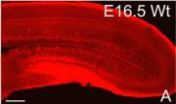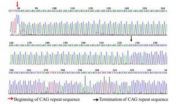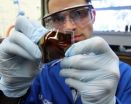(Press-News.org) Chicago, IL (May 5, 2014) — A surgical method combining two techniques for removing precancerous polyps during colonoscopies can substantially reduce the recovery time and the length of hospital stays, potentially saving the health-care system millions of dollars, according to research presented today at Digestive Disease Week® (DDW).
"Not only did we find that patients were discharged a day and a half earlier, we discovered other benefits, which could transform our approach to removing difficult colon polyps," said Jonathan Buscaglia, MD, the study's lead researcher and the director of advanced endoscopy at Stony Brook University School of Medicine.
The typical approach to these difficult-to-remove polyps is a procedure called laparoscopic hemicolectomy (LHC), in which surgeons using a laparoscope must remove an entire section of the colon that contains the polyp. But in contrast to this invasive procedure, surgeons employing laparoscopic-assisted colonoscopy with polypectomy (LACP) use both a laparoscope and an endoscope to isolate and remove just the polyp.
In addition to shorter discharge time (four days vs. two and a half days), researchers found that operating time for patients undergoing LACP was significantly shorter than patients undergoing LHC (95 minutes vs. 179 minutes). LACP patients also had far less estimated blood loss (13 ml vs. 63 ml) and required less IV fluid (2.1 liters vs. 3.1 liters). After surgery, LACP patients were able to resume eating solids foods in less than two days, while LHC patients had to wait nearly four days. Researchers found the two procedures were equivalent in terms of overall efficacy and complications.
Because this study involved 28 patients, Dr. Buscaglia and his team plan to conduct a larger, multi-center investigation to confirm these findings. The researchers also hope to compare LACP versus LHC on removal of polyps in the left colon since this study looked exclusively at right-side colonic polyp removal.
"About 25 percent of patients undergoing colonoscopy require polyp removal, and a significant proportion of these patients have large polyps that cannot be easily removed by standard advanced endoscopic techniques," said Dr. Buscaglia. "These findings suggest that we may need to tailor our surgical approach to ensure every patient receives the best care possible, regardless of polyp removal difficulty."
Dr. Jonathan Buscaglia will present data from the study "Laparoscopic-assisted colonoscopy with polypectomy versus laparoscopic hemicolectomy for endoscopically unresectable right-sided colon polyps: results of a randomized controlled trial," abstract 611, on May 5, at 8 a.m. CT, in room S404 of McCormick Place. For more information about featured studies, as well as a schedule of availability for featured researchers, please visit http://www.ddw.org/press.INFORMATION:
About DDW
Digestive Disease Week® (DDW) is the largest international gathering of physicians, researchers and academics in the fields of gastroenterology, hepatology, endoscopy and gastrointestinal surgery. Jointly sponsored by the American Association for the Study of Liver Diseases (AASLD), the American Gastroenterological Association (AGA) Institute, the American Society for Gastrointestinal Endoscopy (ASGE) and the Society for Surgery of the Alimentary Tract (SSAT), DDW takes place May 3-6, 2014, at McCormick Place, Chicago. The meeting showcases more than 5,000 abstracts and hundreds of lectures on the latest advances in GI research, medicine and technology. More information can be found at http://www.ddw.org.
Follow us on Twitter @DDWMeeting; hashtag #DDW14. Become a fan of DDW on Facebook. END
Dual method to remove precancerous colon polyps may substantially reduce health-care costs
Study finds laparoscopic-assisted colonoscopy with polypectomy reduces hospital utilization
2014-05-05
ELSE PRESS RELEASES FROM THIS DATE:
Women and PAD: Excellent treatment outcomes in spite of disease severity
2014-05-05
ANN ARBOR, Mich. – Women face greater limits on their lifestyle and have more severe symptoms as a result of peripheral artery disease (PAD), but minimally invasive procedures used to unclog arteries are just as successful as in men.
The success of procedures, such as angioplasty or stent placement, in treating women with leg PAD was revealed in a Journal of the American College of Cardiology study.
The study provides a rare look at gender differences in PAD. PAD happens when fatty deposits build up in arteries outside the heart, usually the arteries supplying fresh ...
Cajal-Retzius cell loss and amyloidosis in Alzheimer's disease
2014-05-05
Cajal-Retzius cells are reelin-secreting neurons in the marginal zone of the neocortex and hippocampus. However, the relationship between Cajal-Retzius cells and Alzheimer's disease is unknown. Dr. Jinbo Deng and team from Henan University in China revealed that the number of Cajal-Retzius cells markedly reduced with age in both wild type and in mice over-expressing the Swedish double mutant form of amyloid precursor protein 695 (transgenic (Tg) 2576 mice). The decline in Cajal-Retzius cells in Tg2576 mice was found to occur concomitantly with the onset of Alzheimer's disease ...
New knowledge about muscular dystrophy
2014-05-05
The most common form of muscular dystrophy among adults is dystrophia myotonica type 1 (DM1), where approximately 1 in every 8000 is affected by the disease. The severity of the disease varies from mild forms to severe congenital forms. It is dominantly inherited and accumulates through generations, gaining increased severity and lowered age of onset. DM1 is characterised by accumulating toxic aggregates of ribonucleic acids (RNA) from a specific mutated gene (see figure 1).
When this RNA, which contains thousands of CUG nucleotide repeats, builds up in the cell, it attracts ...
Genetic diagnosis can rule out a suspected Huntington's chorea patient
2014-05-05
Huntington's disease is an autosomal-dominant inherited neurodegenerative disease with a distinct phenotype, but the pathogenesis is unclear. Although patients with a family history have more typical clinical symptoms, signs, and pathological changes, as well as an unambiguous clinical diagnosis, other diseases with dance-like movements, e.g., dentatorubral-pallidoluy-sian atrophy, spinocerebellar ataxia type 17, Huntington's disease-like-2, and neuroferritinopathy, are difficult to identify and distinguish from Huntington's disease. By mutation screening for CAG repeats ...
Animal hoarding, a lesser-known problem for public health and welfare
2014-05-05
Animal hoarding is a psychiatric disorder that consists of accumulating large numbers of animals at home, usually cats and dogs, without providing them with a minimal standard of care. Researchers from IMIM (Hospital del Mar Research Institute) publish the first European study to provide data on this disorder, in the Journal Animal Welfare. The disorder is still largely unknown and has a negative effect on the health of both the people who suffer from it and the animals involved.
"This is the first step towards public recognition of this disorder, a disorder that constitutes ...
Nanoengineers develop basis for electronics that stretch at the molecular level
2014-05-05
Nanoengineers at the University of California, San Diego are asking what might be possible if semiconductor materials were flexible and stretchable without sacrificing electronic function?
Today's flexible electronics are already enabling a new generation of wearable sensors and other mobile electronic devices. But these flexible electronics, in which very thin semiconductor materials are applied to a thin, flexible substrate in wavy patterns and then applied to a deformable surface such as skin or fabric, are still built around hard composite materials that limit their ...
Minneapolis Heart Institute Foundation implants its 1st world's smallest cardiac pacemaker
2014-05-05
MINNEAPOLIS, MN – May 1, 2014 – The Minneapolis Heart Institute Foundation (MHIF) announced today the first implant of the world's smallest pacemaker at the Minneapolis Heart Institute. The device was implanted as part of a global clinical trial and the procedure was the first of its kind in the Midwest.
One-tenth the size of a conventional pacemaker, and comparable in size to a large vitamin, the Medtronic Micra™ Transcatheter Pacing System is delivered directly into the heart through a catheter inserted in the femoral vein. Once positioned, the pacemaker is securely ...
Penn study shows stimulant drug may help women cope with post-menopausal memory lapses
2014-05-05
NEW YORK – Menopausal women have long reported experiencing hot flashes, mood swings, night sweats and memory lapses, too.
A new study from researchers in the Perelman School of Medicine at the University of Pennsylvania shows preliminary evidence that the psychostimulant drug lisdexamfetamine (LDX) can aid post-menopausal women by improving attention and concentration, organization, working memory and recall. The findings will be presented by C. Neil Epperson, MD, director of the Penn Center for Women's Behavioral Wellness, on Tuesday during the American Psychiatric ...
Inbred wolves struggle, moose proliferate at Isle Royale National Park
2014-05-05
During their annual Winter Study at Isle Royale National Park, scientists from Michigan Technological University counted nine wolves organized into one breeding pack and a second small group that is a remnant of a formerly breeding pack.
In the Isle Royale Wolf-Moose Study’s annual report released today, the researchers say that over the past three years, they have tallied the lowest numbers of wolves ever: nine in 2011–12, eight in 2012–13 and nine in 2013–14. During the same period, predation rates—the proportion of the moose population killed by wolves—also dropped ...
Infusion of young blood recharges brains of old mice, Stanford study finds
2014-05-05
STANFORD, Calif. — Something — or some things — in the blood of young mice has the ability to restore mental capabilities in old mice, a new study by Stanford University School of Medicine investigators has found.
If the same goes for humans, it could spell a new paradigm for recharging our aging brains, and it might mean new therapeutic approaches for treating dementias such as Alzheimer's disease.
In the study, to be published online May 4 in Nature Medicine, the researchers used sophisticated techniques to pin down numerous important molecular, neuroanatomical and ...
LAST 30 PRESS RELEASES:
Making lighter work of calculating fluid and heat flow
Normalizing blood sugar can halve heart attack risk
Lowering blood sugar cuts heart attack risk in people with prediabetes
Study links genetic variants to risk of blinding eye disease in premature infants
Non-opioid ‘pain sponge’ therapy halts cartilage degeneration and relieves chronic pain
AI can pick up cultural values by mimicking how kids learn
China’s ecological redlines offer fast track to 30 x 30 global conservation goal
Invisible indoor threats: emerging household contaminants and their growing risks to human health
Adding antibody treatment to chemo boosts outcomes for children with rare cancer
Germline pathogenic variants among women without a history of breast cancer
Tanning beds triple melanoma risk, potentially causing broad DNA damage
Unique bond identified as key to viral infection speed
Indoor tanning makes youthful skin much older on a genetic level
Mouse model sheds new light on the causes and potential solutions to human GI problems linked to muscular dystrophy
The Journal of Nuclear Medicine ahead-of-print tip sheet: December 12, 2025
Smarter tools for peering into the microscopic world
Applications open for funding to conduct research in the Kinsey Institute archives
Global measure underestimates the severity of food insecurity
Child survivors of critical illness are missing out on timely follow up care
Risk-based vs annual breast cancer screening / the WISDOM randomized clinical trial
University of Toronto launches Electric Vehicle Innovation Ontario to accelerate advanced EV technologies and build Canada’s innovation advantage
Early relapse predicts poor outcomes in aggressive blood cancer
American College of Lifestyle Medicine applauds two CMS models aligned with lifestyle medicine practice and reimbursement
Clinical trial finds cannabis use not a barrier to quitting nicotine vaping
Supplemental nutrition assistance program policies and food insecurity
Switching immune cells to “night mode” could limit damage after a heart attack, study suggests
URI-based Global RIghts Project report spotlights continued troubling trends in worldwide inhumane treatment
Neutrophils are less aggressive at night, explaining why nighttime heart attacks cause less damage than daytime events
Menopausal hormone therapy may not pose breast cancer risk for women with BRCA mutations
Mobile health tool may improve quality of life for adolescent and young adult breast cancer survivors
[Press-News.org] Dual method to remove precancerous colon polyps may substantially reduce health-care costsStudy finds laparoscopic-assisted colonoscopy with polypectomy reduces hospital utilization





